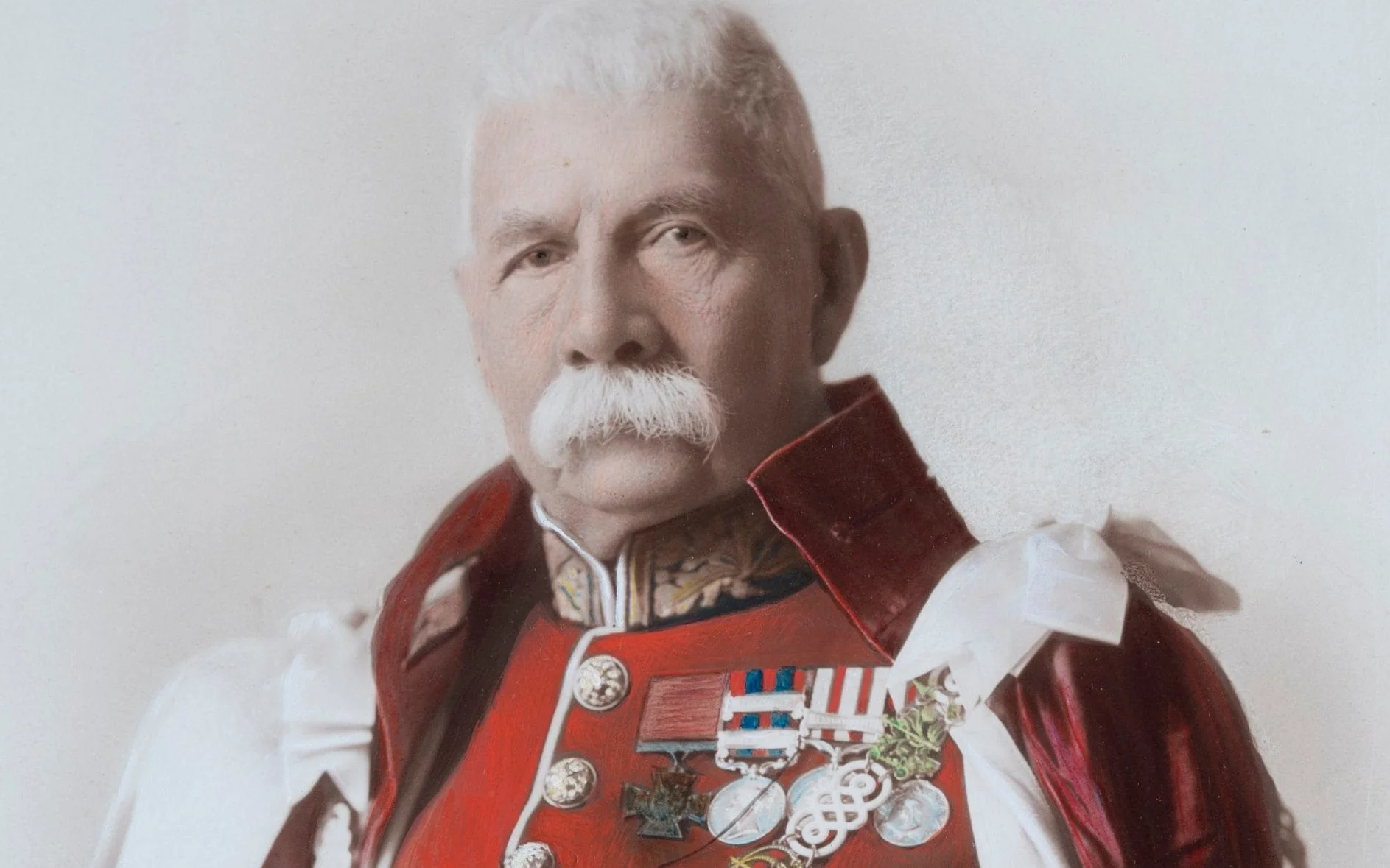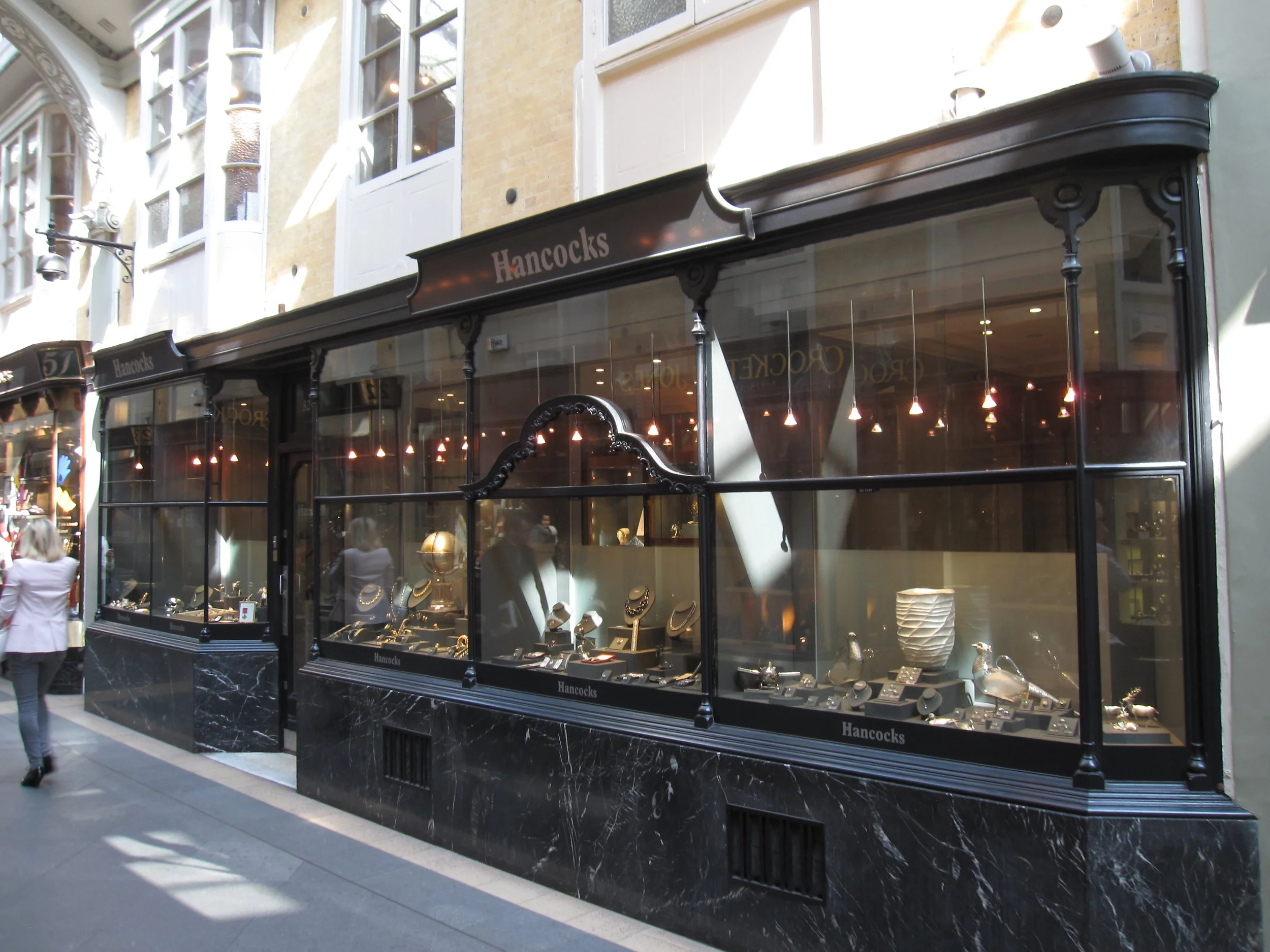The Medal.
In 1857 a young Harry Prendergast serving with the British Army in India is injured saving the life of a fellow lieutenant. For this and further acts of conspicuous bravery lieutenant Prendergast was awarded the Victoria Cross, Britain’s highest award for gallantry. Almost 130 years later it is suggested that his Medal, on loan from the Prendergast family to the National Army Museum for twenty years, may not be the original. This site presents the story of General Sir Harry Prendergast’s Victoria Cross, how its authenticity came to be questioned and why new evidence is now querying this.
The loan.
The letter from NAM confirming the Medal’s loan
Lieutenant Prendergast was subsequently injured twice more during the fighting in India, receiving both a sword cut and a bullet to his arm, and was eventually invalided back to Britain. Then on a “foggy, gloomy” 4th January 1860 he attended Windsor Castle to receive the medal from Queen Victoria herself. This was though just the start of Lieutenant Prendergast’s military career which culminated in him leading the Burma Field Force in 1885–86 at the start of the Third Anglo-Burmese War and rising to become General Sir Harry Prendergast VC, GCB.
Following retirement from the Army General Sir Harry Prendergast lived in London where he worked to improve the lives of other Indian Mutiny veterans, helping many to leave the workhouses and from living on the Poor Law. On 24th July 1913, at the age of 83, he though caught a chill, died and was buried in Richmond Cemetery.
Following the death of General Sir Harry’s wife in 1927 his Victoria Cross passed to his daughter-in-law, Mrs Theo Prendergast, who in 1962 was contacted by the director of the National Army Museum (NAM) about the possibility of loaning the Medal for an upcoming exhibition. The Prendergast family agreed and subsequently arranged for the Medal to be on long term loan at the Museum, ultimately for the following two and a half decades.
The 1983 letter from David Callaghan of Hancocks to NAM stating that in his opinion the Medal was a copy. The meaning of the “difficult period” is unknown..
The controversy.
Since the inception of the Victoria Cross all of the Medals have been made by the same jewellers, Hancocks of London. Although not offering an authentication service, due to their position at the company the staff of Hancocks have at times commented on the authenticity of VCs, with their opinion carrying substantial weight. In June of 1983, after examining the Prendergast VC at NAM, the Director of Hancocks stated that in his opinion it was not the original Victoria Cross. This came as a “considerable shock” to Major Nicholas Prendergast, who had inherited the medal from his grandmother while it was still on loan at NAM, as if correct suggested either the Prendergast family had unwittingly loaned the museum a copy, or something had happened to the original in the two decades it had been at NAM.
Shortly before his death in 1988, Major (then Colonel) Prendergast asked that the Medal be moved to his, and General Sir Harry’s, regimental museum, the Royal Engineers Museum in Chatham, Kent. Since then there have been several theories proposed as to the truth regarding the Medal, though most have been based on the premise that the medal currently at REM is not authentic and that something happened to the Medal either prior or during its time at the National Army Museum.
The Science.
The reverse of the Prendergast (left) and McLeod Innes (right) VCs.
The primary reason for the belief that the Medal at REM may not be authentic is its appearance. All Victoria Crosses are inscribed on their reverse. With the recipient’s name appearing on the bar from which the Medal hangs, and the date of the action for which it was awarded appearing in the centre of the cross itself. On the Prendergast VC the name can though only be faintly seen on the bar, and on the Cross no date is visible. Instead the Medal appears noticeably discoloured, pitted and worn, even when compared to other VCs of the same time period.
Although there are now doubts as to the authenticity of the story that they are created from cannon captured at Sevastapol, Victoria Crosses of the same age are expected to show similar metal compositions. This is because Victoria Crosses are not in fact made individually. Rather they are cast in batches, with the same source blocks of metal used across castings. As the precise composition of the Medals were unknown in the early 1980s any copy would be unlikely to closely match the composition of authentic Medals of the time period.
Fortunately, to try and resolve the conflicting theories regarding the source metal used to create the Victoria Cross, in 1986 (three years after the Prendergast VC was suggested to be a copy) the Royal Armouries at the Tower of London used an X-ray fluorescence spectrometer (XRF) to analyse the metal composition of 16 Victoria Crosses. Most metal items are not pure, but rather have a precise signature of different metal compositions, and by bombarding items with X-rays and analysing the energy signatures released, it is possible to precisely determine their metal composition. The Royal Armouries analysis included four Victoria Crosses borrowed from the Royal Marines Museum, four held by Hancocks and eight from NAM (though this did not include the Prendergast Medal they still held at the time). Alongside the Medals they also analysed a range of metal blocks and cannon suspected to be source materials for the creation of the Medals to see if any matched the compositions of the sixteen VCs. What the Royal Armouries analysis suggested was that Victoria Crosses can in fact be separated into two batches, with Medals issued prior to 1914 displaying a distinct metal composition to those issued after. This suggests at least two metal sources have been used in the manafacture of VCs.
XRF results of VCs and associated metals. Each dot represents a medal/metal and its position in the box is determined by its metal composition. Items with more similar compositions are located closer together. (Red) pre-1914 VCs, (black) VCs from 1914 onwards, (dark blue), other VC metals including unissued VCs, (green) various cannon, (light blue) potential source metals. The VCs separate into two groups (pre and post 1914) with the Prendergast Medal found in the labelled clump of red points representing a group of pre-1914 VCs.
In 2018 an XRF analysis was also carried out on the Prendergast Medal and compared to results for over 100 other VCs, including those from the Royal Armouries [1, 2]. The results were surprising. The Prendergast Medal was found to have an extremely similar metal composition to other pre-first world war VCs. More than this though, its composition was found to be an unusually close match to other Medals from exactly the same time period. Of the ten VCs with an unusually similar metal composition to the Prendergast VC, seven were awarded for actions in 1857, the exact same year as the Prendergast VC. Consequently not only did the Prendergast VC’s metal composition match that of authentic VCs, but its composition was an unusually good match to Medals issued in exactly the same year. Given the precise metal composition of VCs was not known prior to the 1986 Royal Armouries analysis and the source metal remains unknown, making a copy so closely matching that of other 1857 Medals prior to 1983 (when it was suggested to be a copy) would have been extremely difficult. Furthermore, even if the forger somehow new the composition of 1857 VCs why would they be willing to go to such lengths to exactly match the metal composition while also making it look so worn and engrave the name so faintly? This analysis therefore suggested the Medal was likely authentic after all.
XRF analysis of the Prendergast Medal has therefore shed new light on the question of its authenticity. However, questions remain. Most notably how the Medal came to look so worn. Further analyses may shed further insights into the long story of this Victoria Cross.
[1] Marriott, A., Prendergast, J.G.D. Investigating the origin and authenticity of Victoria Cross medals using X-ray fluorescence spectrometry. Sci Rep 10, 19953 (2020). https://doi.org/10.1038/s41598-020-76783-y
[2] Daily Mail article covering the Scientific Reports article https://www.dailymail.co.uk/news/article-9100201/Solved-riddle-Rorkes-Drift-medal.html




